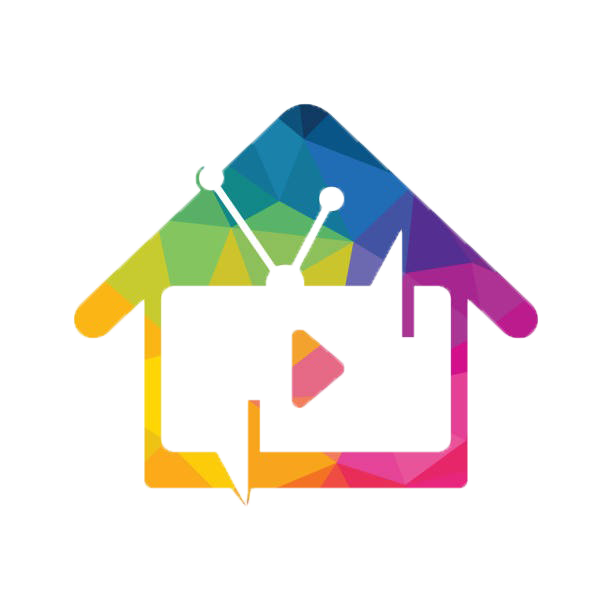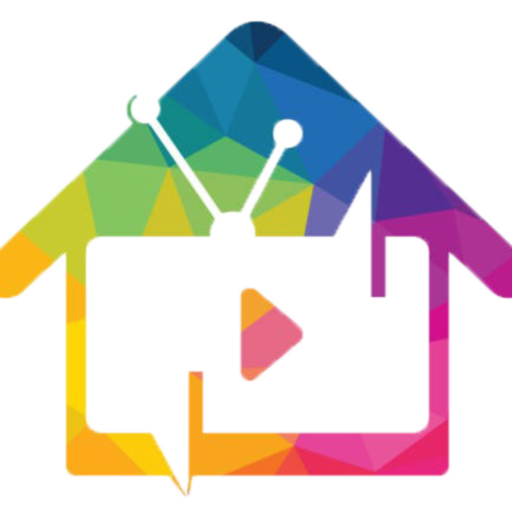
IPTV EPG,
Introduction to IPTV and EPG
Internet Protocol Television (IPTV) represents a significant advancement in how television content is delivered, utilizing internet protocols to stream programming directly to users. Unlike traditional television services that rely on cable or satellite signals, IPTV operates through broadband connections, allowing for greater flexibility and accessibility. With IPTV, viewers can access a wide array of channels and on-demand content, all through a single internet connection. This technological evolution has transformed the viewing experience, enabling users to watch what they want, when they want, and on various devices.
Complementing IPTV is the Electronic Program Guide (EPG), a crucial component that enhances user interaction with the service. The EPG acts as a navigator for viewers, providing a structured schedule of available programming along with detailed information regarding each show. This functionality is vital as it allows users to browse through channels, select content, set reminders, and even record programs. An effective EPG significantly improves the overall user experience, making it easier to discover and access content that aligns with individual preferences.
A well-designed EPG for IPTV systems typically features intuitive navigation, customization options, and real-time updates, ensuring that users are always informed about current and upcoming broadcasts. The integration of EPG with IPTV not only streamlines the content discovery process but also empowers users to tailor their viewing habits according to their unique schedules. The ability to view programming information at a glance, along with functions such as searching for specific genres or shows, simplifies the often overwhelming nature of content availability in today’s digital world. As the popularity of IPTV continues to grow, understanding the role and functionality of EPG becomes essential for any user seeking to optimize their viewing experience.
What is an Electronic Program Guide (EPG)?
An Electronic Program Guide (EPG) is a user-friendly digital interface that enables viewers to access and navigate television programming. It serves as a crucial feature for both traditional broadcast television and Internet Protocol Television (IPTV) services, providing comprehensive information about available channels and program schedules. The EPG enhances the viewing experience by offering an organized layout for users to discover content based on their preferences.
One of the core functionalities of the EPG is its ability to display channel navigation, which allows viewers to easily switch between different channels without the hassle of traditional remote controls. Users can effortlessly browse through a list of current and upcoming programs, often categorized by genre, time, or popularity. This streamlined access helps viewers save time and encourages them to explore diverse content that they may not have considered otherwise.
Another significant aspect of the EPG is the program listing feature, which includes essential details about each show or movie, such as the title, description, start and end times, and cast information. This information is particularly useful for viewers who want to ensure they are watching something relevant and entertaining. Furthermore, many EPGs allow users to set reminders or alerts for specific programs, making it easier to manage viewing schedules.
In contrast to traditional EPGs found in cable television, IPTV EPGs have evolved to accommodate the tech-savvy audience of today. While both systems aim to provide information and scheduling, IPTV EPGs often integrate advanced functionalities, such as interactive features, on-demand content, and personalized recommendations based on user viewing habits. This evolution reflects the dynamic nature of broadcasting technology and the increasing demand for smarter, more adaptable viewing solutions in the digital age.
Benefits of EPG for IPTV Users
Electronic Program Guides (EPG) have become an indispensable feature for users of Internet Protocol Television (IPTV) services. One of the primary advantages of utilizing an EPG is the enhanced user experience it offers. With an EPG, users can easily navigate through a wide array of channels, eliminating the frustration often associated with traditional television listings. The interface typically provides a clear, intuitive layout that allows viewers to see what is currently airing, as well as a schedule of forthcoming programs. This ease of navigation significantly improves the overall usability of IPTV services.
Furthermore, EPG solutions facilitate the ability to set reminders for upcoming shows. Users can program notifications for their favorite broadcasts, ensuring they do not miss any critical content. This functionality not only promotes engagement with the available media but also enhances content consumption habits by allowing users to plan their viewing schedules efficiently. When combined with the vast options that IPTV services provide, reminders can transform the viewing experience into a more personalized routine.
Access to comprehensive program information is another significant benefit of EPG for IPTV users. Each listing typically contains detailed descriptions, runtime, cast information, and genre classification. This wealth of information empowers users to make informed decisions about what to watch, catering to diverse interests and preferences. Additionally, well-structured EPGs can provide recommendations based on viewing patterns, further enhancing user satisfaction.
Overall, the integration of EPG in IPTV services contributes significantly to user satisfaction. It streamlines navigation, fosters engagement through reminders, and enhances the consumption experience with in-depth program details. As the demand for IPTV grows, the role of Electronic Program Guides will continue to evolve, further enriching the options available for viewers.
How EPG Works: The Technology Behind It
The Electronic Program Guide (EPG) is a core component of Internet Protocol Television (IPTV), providing viewers with a user-friendly interface to access television programming information seamlessly. At its essence, the EPG draws on data provided by content providers, encompassing a variety of television schedules, program descriptions, and scheduling information. This data is transmitted to users via server technology designed to handle extensive volumes of information efficiently.
When a user requests program information through their IPTV device, a series of servers respond by delivering the requested EPG data. These servers act as intermediaries between the content providers and the end-users, ensuring that the information is not only accurate but also delivered in real-time. It is essential that EPG formats, such as XML or JSON, are standardized to facilitate this communication and ensure compatibility across various platforms and devices. This standardization plays a crucial role in delivering consistent EPG experiences to users, regardless of their specific IPTV service provider.
Furthermore, the importance of real-time updates cannot be overstated. Viewers expect their EPG data to be current; thus, systems are designed to refresh periodically, capturing last-minute scheduling changes or program delays. Such immediacy enhances user experience by fostering straightforward and efficient navigation through channels and programming options. In addition to delivering important program schedules, EPG systems often include interactive elements that allow users to engage directly with content, such as setting reminders for upcoming programs or browsing additional content information.
In summary, the technology that underpins EPG in IPTV services integrates complex data transmission processes, server communication, and standardized formats, ensuring that viewers receive timely and interactive programming information. The effectiveness of EPG in IPTV ultimately hinges on these critical technologies working in concert to enhance viewer experience and satisfaction.
Implementing EPG in IPTV Services
The implementation of Electronic Program Guides (EPG) in IPTV services involves several critical steps to ensure an effective integration that enhances user experience. Initially, IPTV providers must focus on sourcing reliable data that will form the backbone of the EPG. This data often comes from various content providers, broadcasting organizations, and industry-standard data aggregators. Ensuring that the data is up-to-date, accurate, and comprehensive is essential to provide users with meaningful and timely information about available programming.
Once data sourcing is established, the next step is software integration. This component is crucial as it directly influences how the EPG will function within the IPTV platform. Providers should consider using dedicated EPG software that allows for seamless integration with existing IPTV systems. This software must support various formats and be capable of handling high volumes of data, especially during peak viewing times. Additionally, the software should facilitate real-time updates to ensure that any last-minute programming changes are reflected promptly in the guide.
User accessibility is another vital element to consider in the implementation process. The EPG should be designed to be intuitive and easy for users to navigate. Features such as customizable viewing options, search functionalities, and reminders for favorite shows can significantly enhance user engagement. Moreover, optimizing the EPG for various devices, including smart TVs, tablets, and smartphones, ensures that subscribers have uninterrupted access to programming information no matter how they choose to watch. Best practices in this context also include regular updates and feedback mechanisms to gather user insights, which can further refine and improve the EPG experience.
Challenges and Limitations of EPG in IPTV
As IPTV services continue to gain traction, electronic program guides (EPG) play a crucial role in providing viewers with a seamless experience. However, there are several challenges and limitations that IPTV providers face when delivering an effective EPG. One of the most significant challenges is data accuracy. Given the dynamic nature of television schedules, ensuring that the information displayed in the EPG reflects real-time changes is essential. Inaccurate data can lead to viewer frustration and diminished trust in the service, ultimately impacting user retention.
Another notable issue is integration complexities. Many IPTV services use a diverse range of content sources, which can complicate the EPG creation process. Ensuring that different data feeds are harmonized and delivered consistently can be a daunting task. In some cases, discrepancies in content labeling or scheduling norms across different providers can further exacerbate integration difficulties. This is particularly true in regions where multiple broadcasters and streaming platforms operate concurrently, leading to a fragmented viewing experience.
User engagement also stands out as a crucial factor. A vital aspect of user satisfaction with IPTV services involves the design and functionality of the EPG. An overly complicated or non-intuitive interface may dissuade viewers from utilizing the electronic program guide effectively. IPTV providers must prioritize user experience in their EPG design, ensuring that it is easy to navigate while still rich in features, such as personalized recommendations and advanced filtering options.
Future Trends in IPTV EPG Development
As the IPTV landscape continues to evolve, the development of Electronic Program Guides (EPG) is set to undergo significant changes, driven by advancements in technology and shifting consumer preferences. One of the most notable trends is the integration of artificial intelligence (AI) in EPG systems, enabling intelligent content recommendations based on viewers’ past behaviors and preferences. This functionality aims to enhance user experience by presenting tailored programming suggestions, thereby making the navigation of available content more intuitive and engaging.
Moreover, enhanced interactivity is poised to become a cornerstone of future IPTV EPGs. This includes features such as real-time feedback and social media integration, allowing viewers to engage more deeply with the content they consume. By incorporating elements like audience polling and chat functions directly within the EPG interface, operators can foster a more communal viewing experience. This shift not only encourages active participation but also provides valuable data to providers regarding viewer preferences and engagement patterns.
Comparing EPG Options: IPTV Providers Analysis
In the rapidly evolving landscape of IPTV services, the Electronic Program Guide (EPG) serves as a vital feature that enhances user experience. Various IPTV providers adopt different strategies in implementing EPG functionalities, which significantly influences the overall customer satisfaction. This section focuses on a comparative analysis of several prominent IPTV service providers and their EPG offerings.
One notable provider, XYZ IPTV, utilizes a user-friendly interface for its EPG section, offering viewers a well-organized list of channels along with detailed programming information. Their approach allows users to navigate easily through channels and access program descriptions, air times, and even on-demand options. Feedback from users indicates a high level of satisfaction, particularly around the responsiveness and layout of their EPG.
By analyzing these various IPTV providers, it becomes clear that while there are distinct approaches to EPG functionalities, the ideal choice greatly depends on user preferences concerning usability, features, and overall content navigation. Each provider brings unique strengths to the table, ultimately influencing user satisfaction in the realm of IPTV services.
Conclusion: The Importance of EPG in the IPTV Ecosystem
As we have explored throughout this guide, the Electronic Program Guide (EPG) plays a vital role in the overall functionality and user experience of IPTV services. Providing a structured method for viewers to access information about live programming, an efficient EPG is not merely a luxury; it is a necessity for any modern IPTV solution. By offering details such as show timings, descriptions, and channels, the EPG enhances the convenience and navigation ease for users, making their viewing experience significantly more enjoyable.
In the rapidly evolving landscape of digital entertainment, the importance of selecting an IPTV service equipped with a robust EPG cannot be overstated. Subscribers must consider how a provider’s EPG functions, its user interface, and the accuracy of its programming information. A comprehensive and user-friendly EPG can greatly influence satisfaction and retention rates among viewers. Therefore, when evaluating potential IPTV services, integrating a dependable EPG should be a critical focal point, as it ultimately contributes to an enriched viewing experience. follow us and get access



